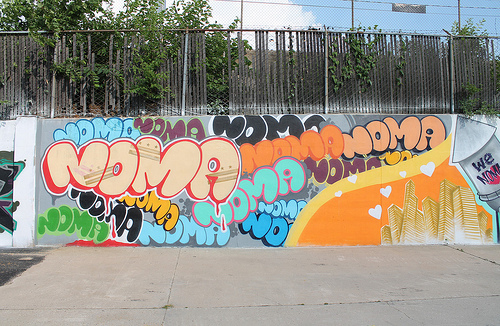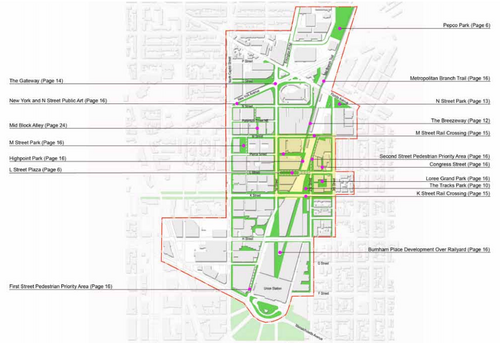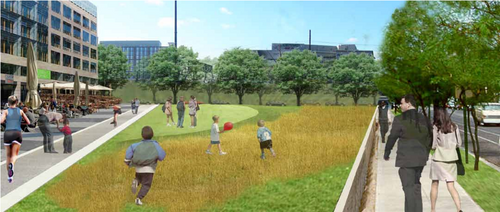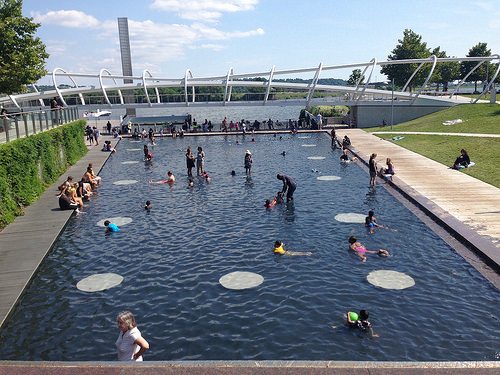A lesson from NoMa: It’s important to build parks early
NoMa has laid out an ambitious plan to invest $50 million into new parks in the booming neighborhood. But rapidly rising property prices are making it increasingly difficult to realize those plans.
NoMa’s 2012 public realm design plan includes everything from brightening the underpasses at the heart of NoMa, to a “mid-block alley” — aka a meander — from New York Avenue to K Street NE, to a “Pepco Park” on an empty lot north of New York Avenue that the utility owns. Last year, DC granted the NoMa Business Improvement District (BID) $50 million to help make the plan happen.
Some elements of the plan are moving forward. NoMa has selected designs for the underpasses on L Street and M Street NE and received commitments from developers to include the NoMa Meander in their plans from New York Avenue to Pierce Street.
“That’s a place where the developers are providing privately-owned space, they’re improving that space at their own cost — so there’ll be kind of water features and everything in there and the city won’t have to pay any money for it,” said Robin Eve-Jasper, president of NoMa BID, on the meander in April.
NoMa is also finding creative uses for temporary public space. It has convinced developers to lend undeveloped land in the neighborhood for popular summer activites, including the NoMa Summer Screen and Wunter Garden.
Turning land into parks is expensive
Making space available for public use while it’s waiting to be developed, however, is one thing; realizing plans for permanent parks is another. Ditto Residential, Sivan Properties, and Zusin Development recently outbid NoMa for an 8,720 square foot triangle plot bounded by Florida Avenue, 3rd and N Streets NE where they plan to build a new parking-free mixed-use building.
NoMa had hoped to build a new N Street Park on the plot. The proposed park would have served “the adjoining neighborhood, improve[d] pedestrian conditions along Florida Avenue and integrate[d] with development south of N Street,” according to the design realm plan.
Stacie West, director of parks projects for the NoMa Parks Foundation, says the BID submitted a “strong offer” for the property but that the owner accepted the offer from Ditto.
The loss of this plot, a small piece of NoMa’s grand park plans, makes clear the need to set aside green space early when developing a neighborhood. You do not need to look far for a good example of this: Navy Yard.
DC has an example of how to do this right
Yards Park along the Anacostia River waterfront was planned early in Navy Yard’s resurgence. The park opened in 2010, only two years after the opening of Nationals Park, which really sparked redevelopment in the neighborhood.
The park has become a focal point of Navy Yard. It has a wading pool popular with children, hosts a well-attended Friday night concert series and, as part of the Anacostia Riverwalk, is on the jogging routes of many runners.
Development continues to go in around Yards Park. The Capital Riverfront BID estimated that only about 43% of the planned 11,981 residential units earmarked for the neighborhood were open or under construction at the end of 2014, its annual report shows.
Yards Park, and nearby Nationals Park, serve as the center of development in Navy Yard, even as most still-planned development will occur a few blocks in from the waterfront.
What can be done in NoMa now?
There is no way to roll back the development that has already gone into — or is planned for — NoMa. According to Eve-Jasper, the neighborhood is expected to become the densest in Washington DC when it is fully built out.
But moving forward, the District government should budget more money for parks to serve NoMa’s existing and coming residents. This would allow the BID to make more competitive offers for land, like the plot that was to become the N Street Park and other green spaces in the neighborhood.
NoMa BID also should continue its efforts partnering with developers to create open space in NoMa, as it has with the meander.
Through a combination of these and other tactics, hopefully NoMa can achieve the vast majority of its public realm design plan. Creating public spaces that will benefit the neighborhood and the city for generations to come.





